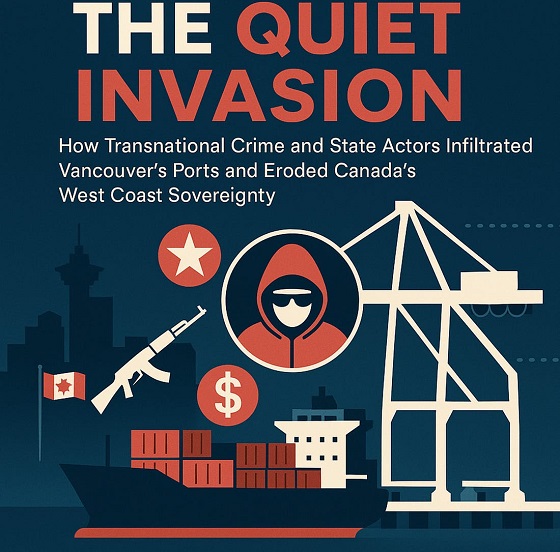Health
Medical organizations and media let Canadians believe gender medicine is safe and universally accepted. It’s not
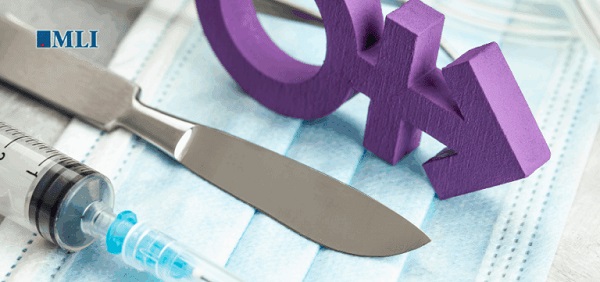
 The Macdonald Laurier Institute
The Macdonald Laurier Institute
14 physicians sign statement for Inside Policy
Many Canadians are likely unaware that several other medically advanced countries—like Britain and multiple EU member states—have restricted hormone therapies and surgical interventions which have documented harms and no clear benefits, writes a group of Canadian doctors.
Following similar actions by peer countries around the world, United States President Donald Trump signed a Jan. 28 executive order declaring his administration will not “fund, sponsor, promote, assist, or support” so-called “gender-affirming” medical treatment for minors—which prescribes hormone therapies and surgical interventions that change sex-determined physical characteristics. Now, a recent report from the U.S. Department of Health and Human Services confirms what many other medical bodies and advanced countries have already recognized: the science and reasoning behind this form of medicine is deeply flawed.
This news appears shocking to many ordinary Canadians, as well as legacy media outlets like The Globe and Mail. That’s largely because Canadian medical organizations and governing bodies—presumed by the public to speak for physicians—have vocally supported “affirmation”: an approach that unquestioningly supports the choice of patients to undergo these treatments. This has left the public with the false impression that such treatments are safe, effective, and universally accepted by physicians. We, a group of 14 Canadian physicians, feel it is vital for the public to know that many—and perhaps most—physicians believe there must be restrictions on gender therapies that permanently change a minor’s body.
Many Canadians are likely unaware that similar restrictive policies are already in place in other medically advanced countries, like Britain and several EU member states.
Most notably, the U.K. government commissioned Dr. Hilary Cass to produce what has become known as the Cass Report, a thorough review of the literature around the treatment for gender dysphoria. Cass investigated whether there is actually proof that these therapies “save lives,” as many activists will insist, or if there is evidence that such interventions make patients’ lives better? Dr. Cass concluded that although medical treatments for gender dysphoria can cause significant harm (as is the case with any medical intervention), there is no conclusive proof of benefit. Hormone therapy and surgeries can lead to chronic pain, incontinence, sterility, and more. They are permanent and irreversible. Therefore, Britain and many other countries restrict most of these treatments for minors.
Here in Canada, Alberta has been the leader in following the evidence. In 2024, the province introduced legislation mandating a minimum age before children could consent to make these permanent, life-altering changes to their bodies. Many physicians were involved with drafting the well-considered legislation. Many more applauded it—some publicly, others quietly.
Despite that, the usual suspects leapt forward to pillory Premier Danielle Smith’s government. The CBC, Globe and Mail, and other legacy media outlets ran headlines like: “Medical experts warn Danielle Smith’s restrictions on gender affirming care will harm vulnerable youth in Alberta.” Most articles quoted bodies such as the Alberta Medical Association (AMA), Canadian Pediatric Society (CPS), and the venerable Canadian Medical Association (CMA), all of which very quickly released statements decrying Alberta’s stance. Such articles give the public the impression that these organizations speak for physicians, expressing a majority, if not unanimous, view.
These organizations do not speak for all physicians. It is hard to know what percentage of physicians oppose “gender-affirming care” for minors because many are afraid to speak their minds in a climate where any dissent is couched as “transphobia.” Physicians who speak out have been subject to investigations and penalties by regulatory organizations, particularly after the passing of federal Bill C-4 in 2022, which potentially makes it a criminal offence to refuse support of a child’s belief that he or she is transgender.
In 2025, one needs to take statements from physicians’ groups with a grain of salt.
Engagement with the CMA is in decline. In 2018 (when membership remained mandatory for doctors in many provinces), the association claimed 87,000 members. By 2024, membership dropped to 75,000 despite an increase in the number of physicians in Canada. Many are members only in a nominal sense, and have little meaningful involvement with the CMA. Rather than taking the pulse of the medical profession as a whole, seeking diverse viewpoints, and making statements that represent this range of views, the CMA is captured and directed by a radical progressive fringe. Unfortunately, this fringe retains the historical imprimatur of being the “voice of physicians” in Canada.
The same phenomenon has occurred with provincial physicians’ organizations like the AMA, which collect mandatory dues but seek minimal engagement from members. Activists have exploited this vacuum to take the helm of these organizations.
This same phenomenon can be seen in organizations like the CPS, CMA, and similar specialty bodies. Their mission statements and missives increasingly read like Marxist screeds rather than wise and measured comment. Just one such example is the CMA’s “ReconciliACTION Plan,” which “challenges anti-Indigenous structures in the health care system.” When physicians with more conservative and scientifically-based views attempt to engage these groups, they have often been met with indifference or hostility, and are systematically prevented from holding positions within these organizations.
This shows that these organizations do not speak for all physicians. When mainstream media rely on such organizations as their sole source for “expert” comment, they miss the real story and avoid engaging with facts. Legacy media portrays this as a battle between science-denying right-wing bigots on one side, and empathetic experts on the other. This could not be further from the truth.
The science is not “settled” by any means. So-called “gender-affirming care” has proven risks and harms, but unproven benefits. It is not “life-saving,” but it is permanently life-altering. We are 14 of the many physicians who strongly believe that minors should not be allowed to make such decisions. The self-proclaimed “experts” do not speak for us.
Written and signed by,
Dr. Arney Lange MSc, MD, FRCPC
Dr. Brent McGrath, MD, FRCPC
Dr. Chris Millburn MD
Dr. David Zitner MD
Dr. Dion Davidson MD, FRCSC, FACS
Dr. Duncan Veasey MD
Dr. Julie Curwin MD FRCPC
Dr. Lori Regenstreif MD, CCFP (AM), FCFP
Dr. Mark D’Souza MD, CCFP (EM), FCFP
Dr. Martha Fulford MD, FRCPC
Dr. M.J. Ackermann MD
Dr. Richard Gibson MD, FCFP
Dr. Roy Eappen MDCM, FRCP (C)
Dr. Shawn Whatley MD, FCFP (EM)
This statement is an initiative of the Macdonald-Laurier Institute, written and signed by concerned physicians from across Canada who are calling for a more careful, evidence-based, and ethically responsible approach to the treatment of gender issues.
Health
RFK Jr. Unloads Disturbing Vaccine Secrets on Tucker—And Surprises Everyone on Trump

The Vigilant Fox
This conversation with startle you, infuriate you—then lift your spirits
It’s not every day an active HHS Secretary sits down for 90 minutes straight with Tucker Carlson.
But that’s exactly what happened, and Kennedy instantly seized Carlson’s attention with a chilling story of CDC corruption.
He revealed that the health agency buried a 1999 internal study led by researcher Thomas Verstraten, which showed an alarming 1135% increase in autism risk from the hepatitis B vaccine.
Kennedy said the researchers were “shocked” by the findings.
So what did they do? They covered it up, according to Kennedy.
“They got rid of all the older children essentially and just had younger children who are too young to be diagnosed [with autism].”
RFK Jr. then explained the real reason why your pediatrician will kick you out of their practice for refusing vaccines.
“There’s a published article out there now that says that 50% of revenues to most pediatricians come from vaccines.”
It’s all about the money. The higher the vaccination rate, the bigger the bonus.
“And that’s why your pediatrician, if you say I want to go slow on the vaccines… will throw you out of his practice because you’re now jeopardizing that bonus structure.”
To the claim that the vaccine–autism link has been “debunked,” Kennedy had a message for Anderson Cooper, Jake Tapper, and everyone who smugly insists on it.
“None of the vaccines given to children in the first six months of life have ever been studied for autism.”
Let that sink in.
He went further, revealing that the CDC actually did find a link when they studied the DTaP vaccine.
But they dismissed it. Kennedy said they claimed it “didn’t count” because the data came from VAERS—the very system they use to track vaccine injuries.
So when the evidence pointed to harm, they simply claimed their own system wasn’t reliable enough and took no steps to fix it.
The vaccine corruption didn’t end there. Kennedy attested that the CDC killed off a vaccine injury reporting system that actually worked—because it worked too well.
It showed that 1 in 37 vaccines caused an injury.
Tucker was stunned.
“Of all vaccines?” he asked.
“Yeah,” Kennedy confirmed.
RFK Jr. explained that the CDC funded a study led by researcher Ross Lazarus. It compared a sophisticated machine-counting system to VAERS.
What did they find? VAERS was failing to catch over 99% of vaccine injuries.

The new system also revealed that 2.6% of all vaccinations resulted in an injury.
So what did the CDC do? They shut it down in 2010. And they’re still using VAERS today—even though it’s a completely inadequate system.

But Kennedy didn’t stop at old vaccine scandals. He also broke down Pfizer’s own COVID vaccine trial data. That trial showed a 23% higher death rate in the vaccinated group.
• Pfizer gave 21,720 people the vaccine and 21,728 the placebo.
• One vaccinated person died of COVID. Two placebo recipients died. They used this tiny difference to claim “100% effective” based on relative risk reduction.
• But in absolute terms, it took 22,000 vaccinations to save one life.
• Over six months, 21 vaccinated participants died of all causes, compared to 17 in the placebo group—a 23.5% higher death rate.
And then there’s vaccine spokesperson Paul Offit, often seen on CNN and other mainstream networks.
Kennedy shared an infuriating story about how he literally “voted himself rich” on the rotavirus vaccine.
While serving on the CDC’s ACIP committee, Offit voted to add rotavirus vaccination to the childhood schedule—even as he was developing his own competing vaccine. He guaranteed demand for his product.
The first approved rotavirus vaccine, RotaShield, was yanked from the market for causing dangerous intussusception. Offit’s vaccine, RotaTeq, eventually replaced it.
He and his partners later sold their rights to Merck for $186 million. As RFK Jr. said, Offit literally “voted himself rich.”
When Carlson mentioned Fauci, Kennedy revealed how Fauci funded research that helped scientists hide evidence of lab-made viruses.
The technique, called “seamless ligation,” allowed researchers to engineer viruses in a lab without leaving telltale genetic fingerprints.
RFK Jr. explained:
“One of his fundees, Ralph Baric, from the University of North Carolina, developed a technique called the seamless ligation technique, which is a technique for hiding the laboratory origins of a manipulated virus.”
“… normally if there’s a virus manipulated, researchers can look at the DNA sequences and they can say this thing was created in a lab. Ralph Baric had developed a technique that he called the no-see technique and its technical name was seamless ligation, and it was a way of hiding evidence of human tampering.”
He called it the exact opposite of what real public health work should be. Carlson cut in, saying, “That’s what you would do if you’re creating viruses for biological warfare.”
The conversation shifted to Trump, leading to one of the biggest highlights of the entire interview.
First, Kennedy explained that Trump chose his cabinet in an unorthodox way: he wanted to see three clips of each candidate performing on TV before considering them for the job.
“One of the things with President Trump is that he really knows how to pick talent… For every one of the positions that he picked, he wanted to see three clips of them performing on TV. He’s very conscious of the fact that these people are going to be out selling his program to the public,” Kennedy said.
That’s when Kennedy ended the interview with a bang, sharing his genuine thoughts about Trump for three straight minutes. It was one of the standout moments of the entire conversation.
If you’re on the fence about Trump, listen to Kennedy here. It might just change how you see him.
“I had him pegged as a narcissist, when narcissists are incapable of empathy. And he’s one of the most empathetic people that I’ve met,” Kennedy said.
“He’s immensely curious, inquisitive, and immensely knowledgeable. He’s encyclopedic in certain areas that you wouldn’t expect,” he continued.
Kennedy added that Trump genuinely cares about soldiers who go to war, citing how Trump “always talks about the casualties on both sides” of the Russia–Ukraine conflict.
“Whether it’s vaccines or Medicaid or Medicare, he’s always thinking about how this impacts the little guy. And the Democrats have him pegged as a guy who’s sort of sitting in the Cabinet meeting talking about how can we make billionaires richer. He’s the opposite of that. He’s a genuine populist,” Kennedy said.
There’s so much more in this conversation, and it might change the way you think about vaccines forever.
For the full picture, watch the entire interview below.
I also wanted to let you know I’m sharing a lot more than just posts like this throughout the day.
For quick clips and updates, check out my Substack Notes page.
Alongside my top 10 daily roundup, it’s one of the best ways to keep up with the news cycle.
Just download the Substack app and follow my page there to see content that doesn’t appear on this main page.
Subscribe to The Vigilant Fox
Brownstone Institute
FDA Exposed: Hundreds of Drugs Approved without Proof They Work

From the Brownstone Institute
By
The US Food and Drug Administration (FDA) has approved hundreds of drugs without proof that they work—and in some cases, despite evidence that they cause harm.
That’s the finding of a blistering two-year investigation by medical journalists Jeanne Lenzer and Shannon Brownlee, published by The Lever.
Reviewing more than 400 drug approvals between 2013 and 2022, the authors found the agency repeatedly ignored its own scientific standards.
One expert put it bluntly—the FDA’s threshold for evidence “can’t go any lower because it’s already in the dirt.”
A System Built on Weak Evidence
The findings were damning—73% of drugs approved by the FDA during the study period failed to meet all four basic criteria for demonstrating “substantial evidence” of effectiveness.
Those four criteria—presence of a control group, replication in two well-conducted trials, blinding of participants and investigators, and the use of clinical endpoints like symptom relief or extended survival—are supposed to be the bedrock of drug evaluation.
Yet only 28% of drugs met all four criteria—40 drugs met none.
These aren’t obscure technicalities—they are the most basic safeguards to protect patients from ineffective or dangerous treatments.
But under political and industry pressure, the FDA has increasingly abandoned them in favour of speed and so-called “regulatory flexibility.”
Since the early 1990s, the agency has relied heavily on expedited pathways that fast-track drugs to market.
In theory, this balances urgency with scientific rigour. In practice, it has flipped the process. Companies can now get drugs approved before proving that they work, with the promise of follow-up trials later.
But, as Lenzer and Brownlee revealed, “Nearly half of the required follow-up studies are never completed—and those that are often fail to show the drugs work, even while they remain on the market.”
“This represents a seismic shift in FDA regulation that has been quietly accomplished with virtually no awareness by doctors or the public,” they added.
More than half the approvals examined relied on preliminary data—not solid evidence that patients lived longer, felt better, or functioned more effectively.
And even when follow-up studies are conducted, many rely on the same flawed surrogate measures rather than hard clinical outcomes.
The result: a regulatory system where the FDA no longer acts as a gatekeeper—but as a passive observer.
Cancer Drugs: High Stakes, Low Standards
Nowhere is this failure more visible than in oncology.
Only 3 out of 123 cancer drugs approved between 2013 and 2022 met all four of the FDA’s basic scientific standards.
Most—81%—were approved based on surrogate endpoints like tumour shrinkage, without any evidence that they improved survival or quality of life.
Take Copiktra, for example—a drug approved in 2018 for blood cancers. The FDA gave it the green light based on improved “progression-free survival,” a measure of how long a tumour stays stable.
But a review of post-marketing data showed that patients taking Copiktra died 11 months earlier than those on a comparator drug.
It took six years after those studies showed the drug reduced patients’ survival for the FDA to warn the public that Copiktra should not be used as a first- or second-line treatment for certain types of leukaemia and lymphoma, citing “an increased risk of treatment-related mortality.”
Elmiron: Ineffective, Dangerous—And Still on the Market
Another striking case is Elmiron, approved in 1996 for interstitial cystitis—a painful bladder condition.
The FDA authorized it based on “close to zero data,” on the condition that the company conduct a follow-up study to determine whether it actually worked.
That study wasn’t completed for 18 years—and when it was, it showed Elmiron was no better than placebo.
In the meantime, hundreds of patients suffered vision loss or blindness. Others were hospitalized with colitis. Some died.
Yet Elmiron is still on the market today. Doctors continue to prescribe it.
“Hundreds of thousands of patients have been exposed to the drug, and the American Urological Association lists it as the only FDA-approved medication for interstitial cystitis,” Lenzer and Brownlee reported.
“Dangling Approvals” and Regulatory Paralysis
The FDA even has a term—”dangling approvals”—for drugs that remain on the market despite failed or missing follow-up trials.
One notorious case is Avastin, approved in 2008 for metastatic breast cancer.
It was fast-tracked, again, based on ‘progression-free survival.’ But after five clinical trials showed no improvement in overall survival—and raised serious safety concerns—the FDA moved to revoke its approval for metastatic breast cancer.
The backlash was intense.
Drug companies and patient advocacy groups launched a campaign to keep Avastin on the market. FDA staff received violent threats. Police were posted outside the agency’s building.
The fallout was so severe that for more than two decades afterwards, the FDA did not initiate another involuntary drug withdrawal in the face of industry opposition.
Billions Wasted, Thousands Harmed
Between 2018 and 2021, US taxpayers—through Medicare and Medicaid—paid $18 billion for drugs approved under the condition that follow-up studies would be conducted. Many never were.
The cost in lives is even higher.
A 2015 study found that 86% of cancer drugs approved between 2008 and 2012 based on surrogate outcomes showed no evidence that they helped patients live longer.
An estimated 128,000 Americans die each year from the effects of properly prescribed medications—excluding opioid overdoses. That’s more than all deaths from illegal drugs combined.
A 2024 analysis by Danish physician Peter Gøtzsche found that adverse effects from prescription medicines now rank among the top three causes of death globally.
Doctors Misled by the Drug Labels
Despite the scale of the problem, most patients—and most doctors—have no idea.
A 2016 survey published in JAMA asked practising physicians a simple question—what does FDA approval actually mean?
Only 6% got it right.
The rest assumed that it meant the drug had shown clear, clinically meaningful benefits—such as helping patients live longer or feel better—and that the data was statistically sound.
But the FDA requires none of that.
Drugs can be approved based on a single small study, a surrogate endpoint, or marginal statistical findings. Labels are often based on limited data, yet many doctors take them at face value.
Harvard researcher Aaron Kesselheim, who led the survey, said the results were “disappointing, but not entirely surprising,” noting that few doctors are taught about how the FDA’s regulatory process actually works.
Instead, physicians often rely on labels, marketing, or assumptions—believing that if the FDA has authorized a drug, it must be both safe and effective.
But as The Lever investigation shows, that is not a safe assumption.
And without that knowledge, even well-meaning physicians may prescribe drugs that do little good—and cause real harm.
Who Is the FDA Working for?
In interviews with more than 100 experts, patients, and former regulators, Lenzer and Brownlee found widespread concern that the FDA has lost its way.
Many pointed to the agency’s dependence on industry money. A BMJ investigation in 2022 found that user fees now fund two-thirds of the FDA’s drug review budget—raising serious questions about independence.

Yale physician and regulatory expert Reshma Ramachandran said the system is in urgent need of reform.
“We need an agency that’s independent from the industry it regulates and that uses high-quality science to assess the safety and efficacy of new drugs,” she told The Lever. “Without that, we might as well go back to the days of snake oil and patent medicines.”
For now, patients remain unwitting participants in a vast, unspoken experiment—taking drugs that may never have been properly tested, trusting a regulator that too often fails to protect them.
And as Lenzer and Brownlee conclude, that trust is increasingly misplaced.
- Investigative report by Jeanne Lenzer and Shannon Brownlee at The Lever [link]
- Searchable public drug approval database [link]
- See my talk: Failure of Drug Regulation: Declining standards and institutional corruption
Republished from the author’s Substack
-

 Alberta17 hours ago
Alberta17 hours agoAlberta Independence Seekers Take First Step: Citizen Initiative Application Approved, Notice of Initiative Petition Issued
-
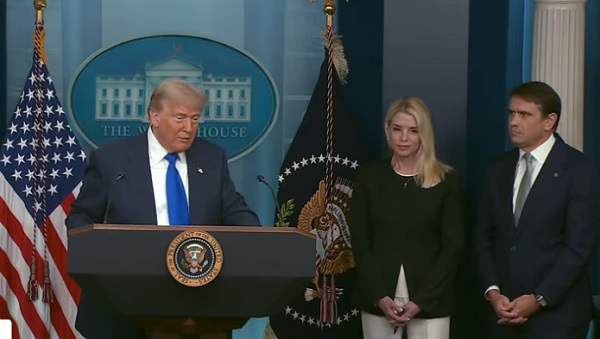
 Business2 days ago
Business2 days agoTrump on Canada tariff deadline: ‘We can do whatever we want’
-

 Automotive2 days ago
Automotive2 days agoPower Struggle: Electric vehicles and reality
-

 Automotive2 days ago
Automotive2 days agoElectric vehicle sales are falling hard in BC, and it is time to recognize reality.
-
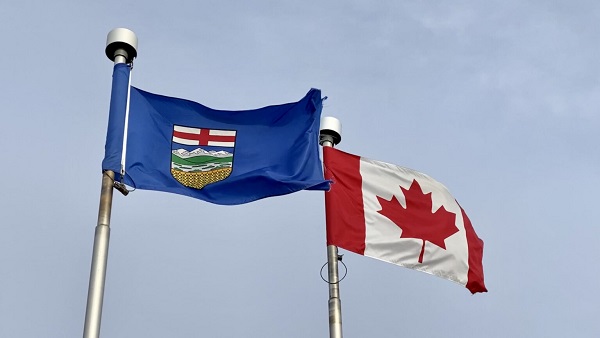
 Alberta16 hours ago
Alberta16 hours agoWhy the West’s separatists could be just as big a threat as Quebec’s
-

 Business19 hours ago
Business19 hours agoCanada Caves: Carney ditches digital services tax after criticism from Trump
-

 Crime19 hours ago
Crime19 hours agoSuspected ambush leaves two firefighters dead in Idaho
-
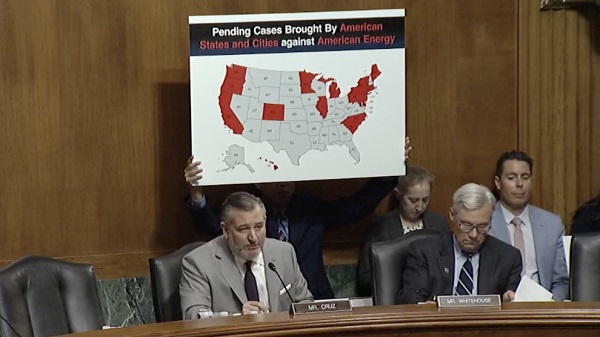
 Energy2 days ago
Energy2 days agoChina undermining American energy independence, report says



